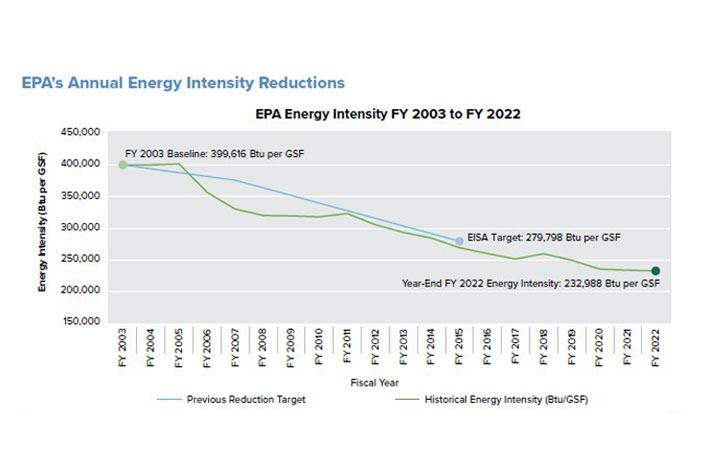Support for Meeting Safety, Sustainability, and Climate Resiliency Executive Order Requirements

Project Brief
The Challenge
Certain laws and Executive Orders, including EOs 12196, 14008 and 14057, set requirements for federal agencies related to net-zero emissions buildings, carbon-pollution free electricity procurement, zero-emission vehicle acquisition, occupational safety and health, environmental stewardship, and climate resilience and adaptation. In response to these requirements, agencies prepare strategic sustainability plans, set goals, implement priority actions, and develop materials to communicate their challenges and successes. The U.S. Environmental Protection Agency needs a wide variety of support in responding to these requirements.
ERG's Solution
For over two decades, ERG federal sustainability and climate resilience experts have been helping EPA meet government-wide targets, establish ambitious but achievable agency-specific goals, and complete priority actions. For example, ERG built data management and visualization tools that inform target-setting and, on an ongoing basis, we coordinate with key agency staff to help them identify strategic and priority actions and draft, edit, and design EPA plans and other communications materials. On the technical side, ERG specialists have collected and analyzed EPA utility data and invoices in a custom database, prepared EPA’s annual greenhouse gas emissions inventory, created tracking tools to inventory EPA’s metering hardware and potential CFE contract opportunities, and leveraged existing resources for federal sustainability and energy management from the U.S. Department of Energy. ERG also built a climate resilience assessment framework for EPA-owned laboratories and contributes to EPA draft strategic sustainability, climate adaptation implementation, and annual energy management plans. In addition, ERG collects environmental stewardship and OSH data from EPA facilities annually and uses it to help EPA satisfy OSH reporting requirements listed in Section 19(a)(5) of the 1970 OSH Act, develop comprehensive environmental stewardship reports, and identify opportunities to improve facility operations.
Client
U.S. Environmental Protection Agency